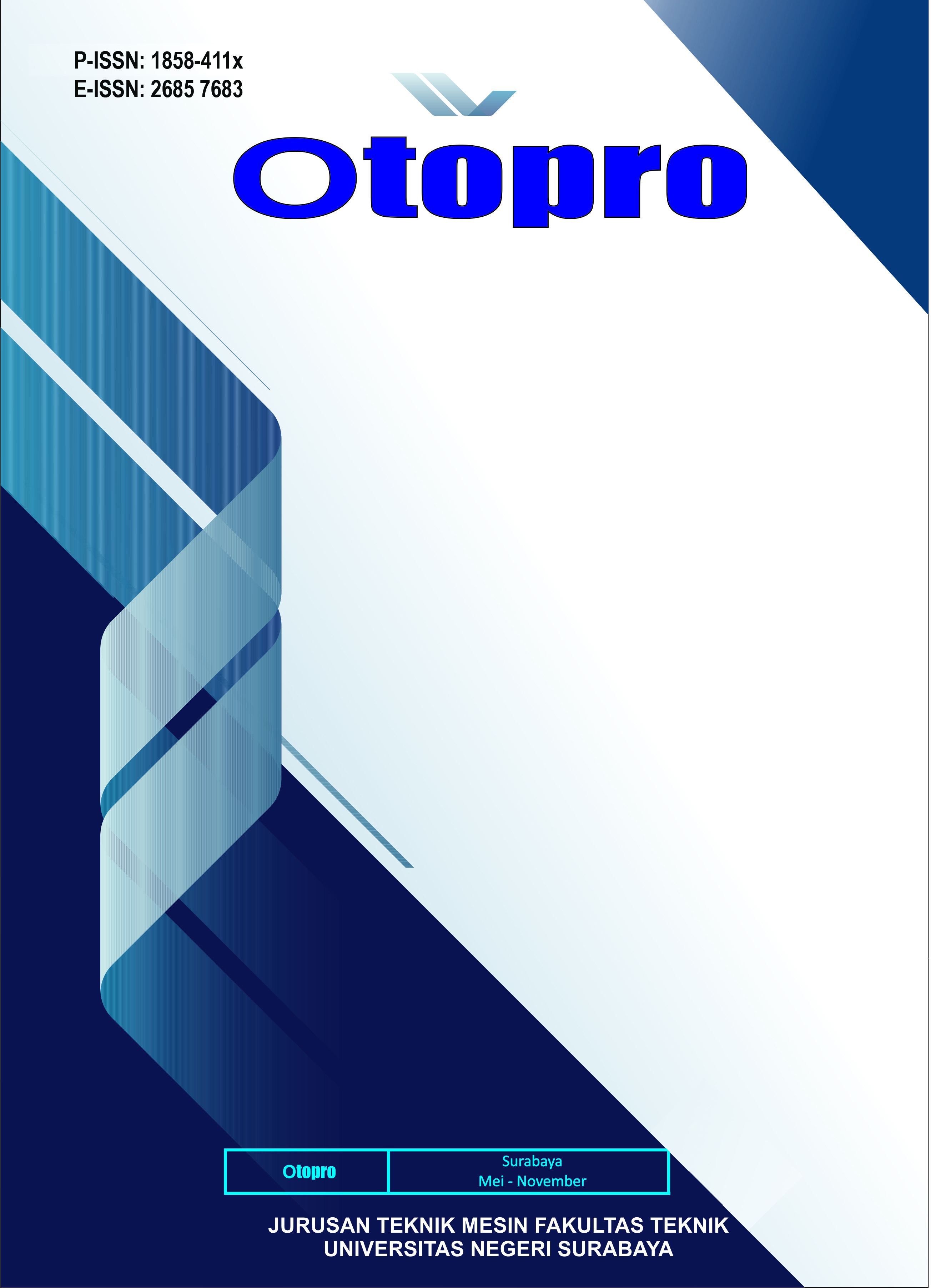ANALISIS STRUKTUR PADA DISC BRAKE DENGAN VARIASI MATERIAL DAN JUMLAH LUBANG VENTILASI TERHADAP TEMPERATUR DAN TEGANGAN EKUIVALEN
DOI:
https://doi.org/10.26740/otopro.v18n1.p33-43Keywords:
Disc Brake, Ventilation Holes, Variation of Materials, Equivalent Stress, TemperatureAbstract
Manny disc brake are produced at conventional machinery workshop. But, the optimum value of disc brake based on heat dissipation, and the safety is unknown. One of the causes of vehicle accidents is the vehicle factor (brake failure). Prolonged and continuous braking on the disc brake can result in fadding. Continuous stress generation can decrease fatigue life. The required material and the right number of holes are needed to solve this problem. The Purpose of this research is to get the optimum temperature and stress value. In this study, simulations were carried out with CAE software on disc brakes with materials Al 7075- T6, SS 304, gray cast iron and the number of ventilation holes 36, 48, 60. The results show that the disc brake with Al 7075-T6 material and 60 ventilaton holes has the best heat dissipation with 38,005?C temperature value. Material gray cast iron with number of ventilation holes 48 produces the lower equivalent stress with 89,272 Mpa. From the research it can be concluded, disc brake with higher density,has higher temperature too. The greater tensile strength of disc brake material, resulting the lower equivalent stress. The gray cast iron material and the number of ventilation holes 48 is the most optimal in temperature absorption, the longest fatigue life, and the highest fatigue safety factor, with a temperature value of 54.99?C, a fatigue life of 100000000 cycles, and an FOS of 3.34.The more number of ventilation holes, has the lower of temperature result but the higher stress concentration.
References

Downloads
Published
How to Cite
Issue
Section
License

This work is licensed under a Creative Commons Attribution-NonCommercial 4.0 International License.
 Abstract views: 493
,
Abstract views: 493
, PDF Downloads: 857
PDF Downloads: 857


3.png)










